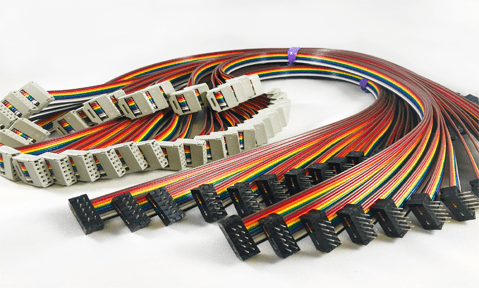In the contemporary era of extensive connectivity, the capability to access the internet wirelessly has emerged as a fundamental requirement. Whether engaging in remote work, streaming content, gaming, or simply navigating the web, Wi-Fi access is indispensable. Although numerous modern devices are equipped with integrated Wi-Fi functionality, certain older or specialized equipment may not possess this capability. This is where Wi-Fi adapters become essential. Wi-Fi adapters offer a straightforward and efficient solution to facilitate wireless internet access on devices lacking built-in Wi-Fi, effectively connecting traditional wired internet systems with the ease of wireless networks.
This article will delve into the nature of Wi-Fi adapters, their operational mechanisms, the various types available, their uses, and their ongoing significance in a landscape where Wi-Fi is nearly omnipresent. Furthermore, we will discuss the essential features to consider when selecting a Wi-Fi adapter and examine how these devices continue to be vital in enhancing and broadening wireless connectivity.
1. What Is a Wi-Fi Adapter?

A Wi-Fi adapter is a device that enables a computer or other hardware to connect to a wireless network. It operates by converting the signals from the device into radio waves, which can then be transmitted over Wi-Fi networks. Essentially, the adapter serves as a conduit between the device and the router, facilitating the wireless transmission of data over the internet.
Wi-Fi adapters are especially beneficial for desktop computers, older laptops, and various devices that lack integrated wireless capabilities. Typically, these devices connect to a router through an Ethernet cable; however, with a Wi-Fi adapter, users can experience the convenience of wireless internet without the necessity of physical connections.
a. Functionality of Wi-Fi Adapters
Wi-Fi adapters utilize radio frequency (RF) signals to establish communication with a wireless router. They employ various wireless communication standards, such as IEEE 802.11b/g/n/ac, to transmit and receive data. When a Wi-Fi adapter is connected to a computer or device, it searches for available wireless networks, similar to a built-in Wi-Fi card. Once a connection is made, the adapter interacts with the router, enabling the device to access the internet.
Most Wi-Fi adapters connect to devices through USB ports, although there are models designed for internal installation using PCIe slots or M.2 interfaces on desktop motherboards. Additionally, some Wi-Fi adapters are equipped with external antennas to enhance signal strength and range, ensuring reliable connectivity even in locations where Wi-Fi signals may be weak.
2. Types of Wi-Fi Adapters

Wi-Fi adapters are available in a variety of types, each tailored to meet specific use cases and device compatibility requirements. Familiarity with these different types can assist users in selecting the most suitable adapter for their particular needs.
a. USB Wi-Fi Adapters
USB Wi-Fi adapters represent the most prevalent category of Wi-Fi adapters. These compact, portable devices connect directly to a computer’s USB port. Upon connection, the adapter facilitates the computer’s access to wireless networks. USB Wi-Fi adapters typically feature a “plug-and-play” design, which allows for straightforward installation without the need for extensive configuration or additional software.
Advantages:
– User-friendly installation and operation.
– Portable, allowing use across multiple devices.
– Available in various sizes, ranging from small dongles to larger models with external antennas for enhanced signal reception.
Disadvantages:
– Performance may be constrained by the USB interface speed, particularly with USB 2.0 adapters.
– Generally, they may not match the performance levels of internal Wi-Fi adapters.
b. PCIe Wi-Fi Adapters
PCIe Wi-Fi adapters are specifically designed for desktop computers. These adapters are installed directly into a PCIe (Peripheral Component Interconnect Express) slot on the motherboard. Due to their internal installation, PCIe Wi-Fi adapters can provide superior performance and signal strength compared to USB adapters, especially when they include external antennas.
Advantages:
– Enhanced performance and extended range, particularly with external antennas.
– Not restricted by the speed limitations of USB ports.
– Well-suited for desktop computers requiring dependable, high-speed wireless connectivity.
Disadvantages:
– Installation necessitates opening the computer case, which may be daunting for users lacking technical expertise.
– Not portable and cannot be easily transferred between devices.
c. M.2 Wi-Fi Adapters
M.2 Wi-Fi adapters serve as another option for desktop computers, especially those with modern motherboards that support the M.2 interface. These adapters are akin to PCIe Wi-Fi adapters but are more compact and designed for devices equipped with M.2 slots. M.2 Wi-Fi adapters are frequently utilized in high-performance desktops and laptops.
Advantages:
– Compact design.
3. Key Features to Consider When Choosing a Wi-Fi Adapter

Selecting an appropriate Wi-Fi adapter involves considering various factors such as speed, compatibility, and range. Below are essential features to evaluate when purchasing a Wi-Fi adapter.
a. Speed and Wireless Standards
Wi-Fi adapters are designed to support various wireless standards, which influence their speed and overall performance. The most prevalent wireless standards include:
– 802.11b: An older standard with maximum speeds of up to 11 Mbps.
– 802.11g: An enhancement over 802.11b, providing speeds of up to 54 Mbps.
– 802.11n: Known as Wi-Fi 4, this standard allows speeds of up to 300 Mbps and is commonly found in many consumer devices.
– 802.11ac: Referred to as Wi-Fi 5, this standard supports speeds of up to 1 Gbps, making it suitable for high-speed internet connections and data-intensive activities such as streaming and gaming.
– 802.11ax: Known as Wi-Fi 6, this is the most recent standard, supporting speeds of up to 10 Gbps and enhancing network efficiency, making it ideal for environments with many connected devices.
Opting for a Wi-Fi adapter that adheres to the latest wireless standards guarantees optimal speed and performance.
b. Frequency Bands: 2.4 GHz vs. 5 GHz
Wi-Fi technology operates on two primary frequency bands: 2.4 GHz and 5 GHz.
The 2.4 GHz band offers a longer range but is more susceptible to interference from devices such as cordless phones, microwaves, and Bluetooth gadgets. Additionally, it has lower maximum speeds compared to the 5 GHz band.
Conversely, the 5 GHz band provides higher speeds but has a reduced range and is more impacted by physical barriers like walls.
Many contemporary Wi-Fi adapters are equipped to handle both 2.4 GHz and 5 GHz bands, enabling users to select the most suitable option based on their requirements. This dual-band capability is particularly advantageous for individuals in densely populated areas or those requiring high-speed internet for activities like streaming or gaming.
c. Antenna Design and Range
Wi-Fi adapters are available with various antenna configurations, which can significantly affect their range and signal strength. Some adapters incorporate built-in antennas, while others are designed with external antennas that can be adjusted for optimal performance.
4. Applications of Wi-Fi Adapters

Wi-Fi adapters serve a multitude of purposes, rendering them essential tools for both individual consumers and professionals alike. The following are some prevalent uses:
a. Upgrading Legacy Devices
Numerous older desktop computers and laptops lack integrated Wi-Fi functionality. By utilizing a Wi-Fi adapter, users can enhance their devices to connect to wireless networks without the need for internal hardware installation. This solution is especially beneficial for those who prefer to circumvent the inconvenience of running Ethernet cables throughout their residences or workplaces.
b. Improving Gaming and Streaming Performance
Wi-Fi adapters designed for high-speed performance are particularly suited for online gaming and streaming activities. These tasks necessitate rapid and reliable internet connections to prevent issues such as lag, buffering, or disconnections.






